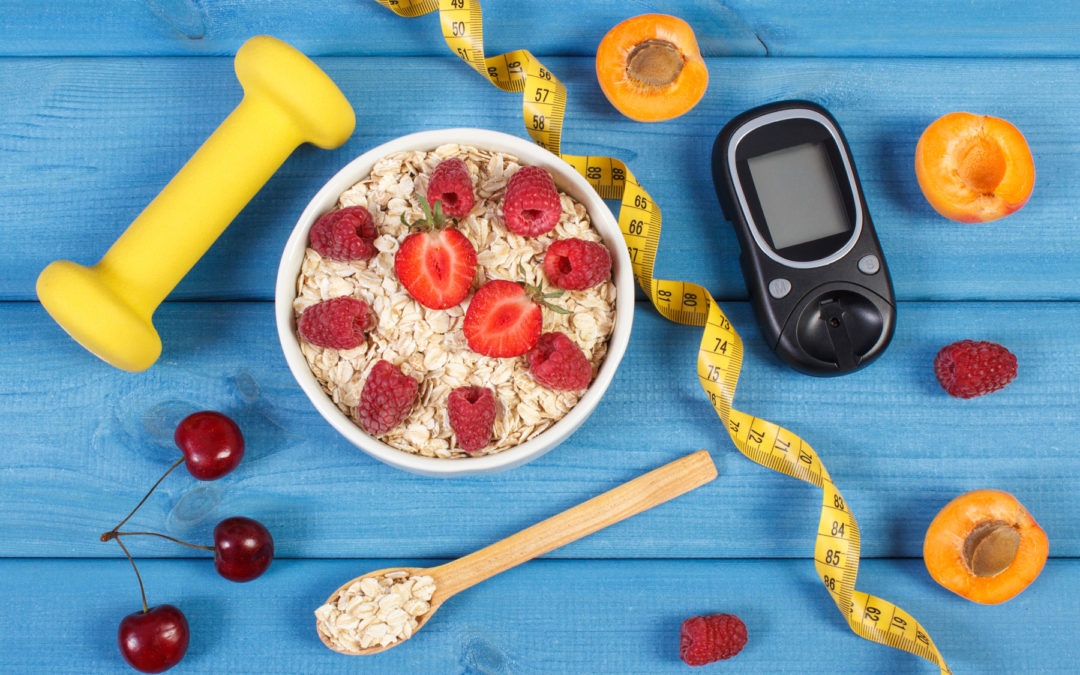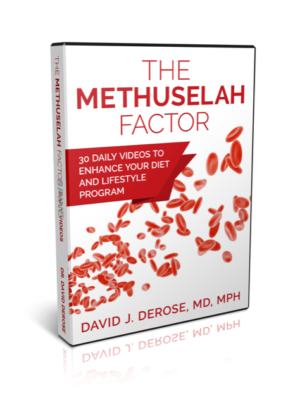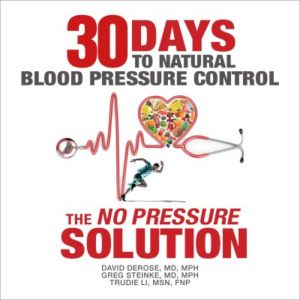David J. DeRose, MD, MPH
Note: The material is designed to inform and educate. It represents the opinions of the author based on his understanding of current medical research and is not intended to be viewed as a replacement for medical evaluation, advice, diagnosis, or treatment. If the information in this handout disagrees with personal information provided by your health care professionals, please follow their counsel.
Key Natural Strategies for Type 2 Diabetes
- Weight reduction
- Exercise
- Dietary Changes
- Replace saturated fats and trans fatty acids with monounsaturated fats
- Emphasize high fiber choices
- Consider a wholly plant-based diet
- Talk with your doctor about simplifying drug regimens
Key quote: “Moreover, many drugs used by…patients may contribute to glucose intolerance. These include thiazide diuretics, glucocorticoids, beta-adrenergic blocking agents, nicotinic acid, and phenytoin.” Bressler P, DeFronzo RA. Drugs and diabetes. Diabetes Rev. 1994;2:53-84.
Supplements worthy of consideration:
- Guar
- Garlic
- Bitter Melon
- Ginseng
- Chromium
- Alpha lipoic acid
- Vanadium
- GLA
- Bilberry
- Gymnema sylvestre
- Fenugreek
Insights on selected supplements
I. Garlic
So long as someone is not on a drug with a critical therapeutic window; there is evidence that garlic may have salutary effects with limited side effects.
Typical dosage: 4 grams of fresh garlic or equivalent preparations (9.6 mg allicin-releasing potential in one recent study showed beneficial lipid effects).
However, some research suggests many garlic pills release only small amounts of their active ingredients.
Garlic References: Kannar D, et al. J Am Coll Nutr 2001 Jun;20(3):225-31; Lawson LD, Wang ZJ. J Agric Food Chem 2001 May;49(5):2592-9
II. Ginseng
200 mg of Asian Ginseng (Panax ginseng) per day for eight weeks improved mood, physical activity and lowered fasting blood glucose, hemoglobin A1c levels and body weight.
Criticism of the study is that weight reduction by itself will result in blood sugar improvements.
Note that Siberian Ginseng (Eleutherococcus senticosus) does not contain the ginsenosides that are among the active blood sugar-lowering components.
More rigorous studies of American Ginseng (Panax quinquefolius) demonstrated that 3000 mg of powdered root taken with a standardized “meal” could blunt the post meal blood sugar rise in individuals with type 2 diabetes.
The same group found that doses beyond 3000 mg gave no additional blood sugar effect.
This raises the question that the threshold for blood sugar lowering may be considerably lower than 3000 mg
Ginseng concerns
Allergies, asthma in susceptible individuals
Ginseng can lower blood concentrations of warfarin
May induce mania if used concomitantly with the antidepressant phenelzine.
May have steroid-like effects including both estrogenic and corticosteroid effects
Has been associated also with hypertension, insomnia, nervousness and headache
Ginseng Conclusions
High dose American ginseng has documented effectiveness in type 2 diabetes: 3000 mg with or up to 2 hours before a meal
Not recommended for people taking medications with a critical therapeutic window such as warfarin
Relatively contraindicated in hypertension as well as conditions where estrogenic or corticosteroid effects could be detrimental
Probably not a good choice in individuals with history of need for psychiatric medications
Ginseng References:
Sotaniemi EA, Haapakoski E, Rautio A. Ginseng therapy in non-insulin-dependent diabetic patients. Diabetes Care 1995 Oct;18(10):1373-5.
Vuksan V, et al. Diabetes Care 2000 Sep;23(9):1221-6
Vuksan V, et al. Arch Intern Med 2000 Apr 10;160(7):1009-13
III. Gymnema sylvestre
- Active constituents
- Gymnemosides
- Gymnemic acids
Possible mechanisms (how it seems to work)
Well established role in decreasing sweet-perceptions, may help with “sweet tooth”/sugar cravings
Demonstrated to decrease caloric intake
May decrease intestinal fat and glucose absorption
Beta-cell stimulant and “tonic”?
Insulinomimetic (acts like insulin)
May also have lipid lowering effects
Side Effects
Hypoglycemia
Animal models suggest that it may raise blood pressure
Recognize that the literature is very sparse on human studies of G. sylvestre
Recommendations
400 mg/d of GS4, a G. sylvestre extract may aid in diabetic control, with few side effects or contraindications noted
If G. syvestre is used careful monitoring for side-effects is recommended
IV. Momordica (bitter melon, karela)
Active ingredients
- Momordin/ charantin (hypoglycemic)
- Momordicine alkaloid
- Polypeptide P
Possible mechanisms (how it seems to work)
Increases glucose uptake
Increases glycogen synthesis
Insulinomimetic
Side Effects
Diarrhea/ abdominal distress
Abortifacient (may cause abortions)
Hypoglycemia
Favism (a severe reaction that can also occur with fava beans)
Drug Interactions
Chlorpropamide
Uses
Blood sugar lowering
Animal models suggest that this plant may also lower insulin resistance.
A water-soluble extract of the fruits significantly reduced blood glucose concentrations during a 50 g oral glucose tolerance test in the diabetics and after force-feeding in the rats.
Fried karela (momordica) fruits consumed as a daily dietary supplement produced small but significant improvements in glucose tolerance.
Improvement in glucose tolerance was not associated with an increase in insulin production.
Selected reference: Leatherdale BA, Panesar RK, Singh G, Atkins TW, Bailey CJ, Bignell AH. Improvement in glucose tolerance due to Momordica charantia (karela). Br Med J (Clin Res Ed) 1981 Jun 6;282(6279):1823-4
V. Soluble Fiber-Rich Plant Products
Examples: guar gum, psyllium, beta-glucan rich barley
Lipid lowering effects in addition to blood sugar lowering effects
Favorable effect on prolonging blood levels of CCK (cholecystokinin) which has been shown to reduce food intake in animals and humans
VI. Fenugreek
Appears to help lower blood sugar by multiple mechanisms
- Delays glucose absorption
- Prolongs gastric transit
- Fiber effects
- Note: also appears to have lipid lowering properties
VII. Alpha lipoic acid
Demonstrated benefits in both type 1 and type 2 diabetes
May help prevent diabetes pathologies including:
- macular degeneration
- cataracts
- neuropathy
Demonstrated to help treat peripheral and autonomic diabetic neuropathy.
Dosages of 600 – 800 mg/d often used
Older studies show neuropathy benefits with as little as 50 mg twice daily
Appears to have beneficial effects in improving insulin sensitivity and treating and/or preventing diabetic complications
Regimens in the range of 600 -1800 mg/day have often been used
the absence of a dose response effect in some studies raises the question as to whether lower doses may be efficacious
It may be reasonable to start at dosages as low as 50 mg twice daily while assessing clinically
Appears to have few side effects
VIII. Vanadium
A recent study led further credence to the value of this micronutrient in diabetes
11 patients with type 2 diabetes received daily vanadyl sulfate for 6 weeks
over two weeks titrated up to 150 mg/d
dosed as 50mg thrice daily with meals
Multiple improvements were noted:
- lowering of HbA1c and fructosamine
- decreased FBS; evidence of improved insulin sensitivity
- fall in total cholesterol and LDL
Vanadyl sulfate appears well tolerated and potentially useful in type 2 diabetes
gradually titrate dosage over 6 wk
target dosage of 150 mg/day
May be a useful short-term strategy
Concerns with long term use: vanadium accumulation and potential for side-effects
This concern has been underscored by the failure to demonstrate vanadium deficiency in patients with diabetes
IX. Chromium
Research has demonstrated that chromium has a variety of salutary effects in glucose metabolism.
These include:
- increased number of insulin receptor
- improved insulin binding to the receptors
- enhanced insulin internalization
- augmented beta cell sensitivity
All of this culminates in increases in insulin sensitivity.
An important study…
180 Chinese subjects with type 2 DM
Randomized to twice daily regimen of either placebo, 100, or 500 micrograms of chromium picolinate for 4 months.
At four months, HBA1c (average blood sugar indicator) compared to placebo group:
22% lower in 1000 mcg/d group
12% lower in 200 mcg/d group
Additionally, improvements in fasting and post meal insulin levels in both chromium groups
Lowered cholesterol in the 1000 mcg/d group
Chromium Summary
Appears to be a generally safe and reasonable supplement to improve glucose homeostasis
No compelling data supporting its use as a weight reduction aid
May have favorable effects on lipids
Dosage may be best guided by degree of glucose intolerance. Some suggest the following considerations:
200 mcg/day Cr if mildly glucose intolerant
More than 200 mcg/day in individuals with greater glucose intolerance and/or diabetes
Dosages in the range of 1000 mcg per day may be necessary in some individuals with diabetes
X. Niacinamide (nicotinamide)
An agent of promise in both type 1 and type 2 diabetes
May help preserve insulin-producing capacity in early type 1 diabetes
A provocative study in type 2 diabetes:
18 patients with type 2 diabetes enrolled in a 6 month single blind study:
All had failed to control their blood sugar with the maximum dosage of standard oral medications (sulphonylureas)
Some randomized to nicotinamide 500 mg TID
Results in those using nicotinamide:
Achieved metabolic control indistinguishable from patients treated with insulin.
increased C-peptide release (an evidence of increased insulin production by the pancreas)
References:
Am. J. Physiol. 274 (Gastrointest. Liver Physiol. 37): G607–G613, 1998
Am J Clin Nutr 1999;69:55–63.




